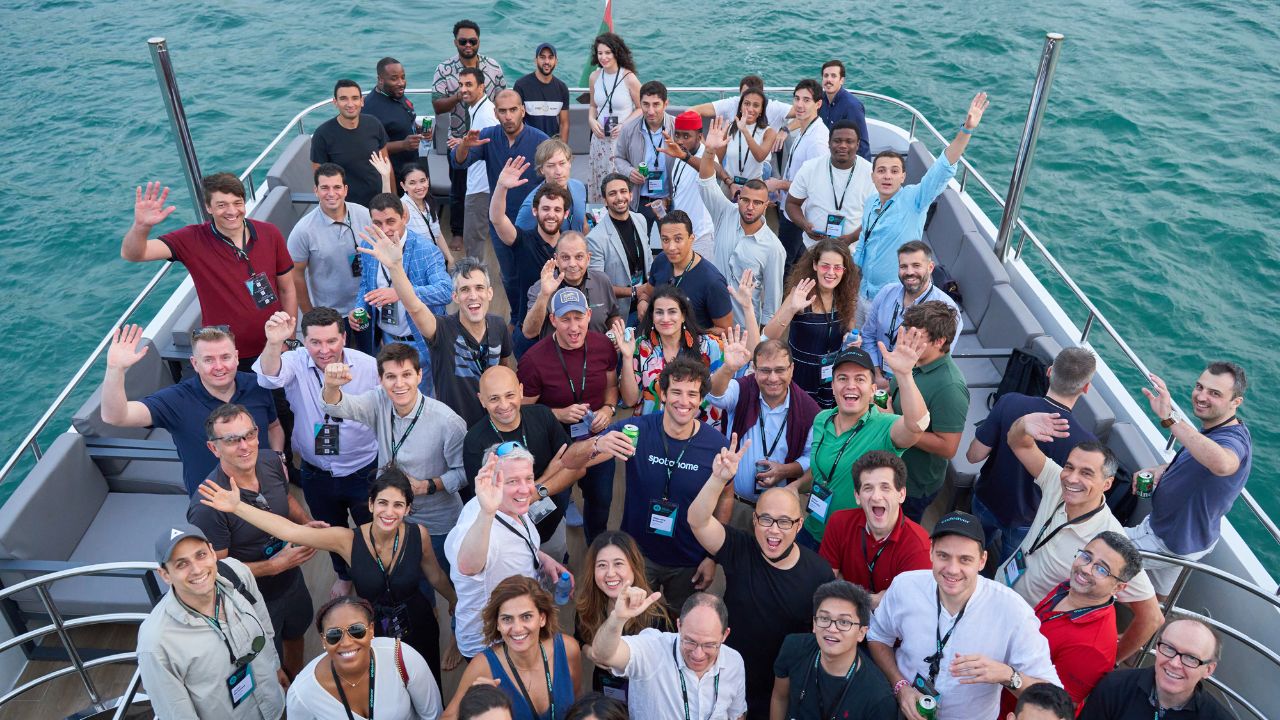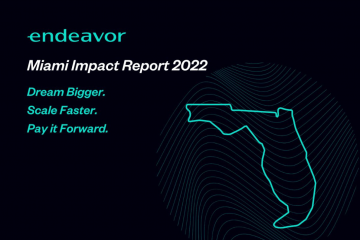Entrepreneurs play a critical role in cities and nations as they create new jobs, generate economic growth, and spread the development of new innovations. Endeavor Insight completed one of the largest studies ever conducted on entrepreneurship communities over the course of 18-months, these are the five key lessons their research uncovered:
1. Entrepreneurship communities are not predestined to follow a single development path.
In Bangalore, India, the story of the city’s success as a global tech center can be traced back to the creation of Infosys in 1981 by Narayana Murthy and six other engineers. The company had offices in seven countries by the end of the 1990s and launched a $250M investment fund in 2015 for India-based businesses. Tech founders who succeed at building large companies in Bangalore were often found reinvesting their resources back into the community by supporting former employees who launch their own firms as well as by acting as mentors and investors.
In Nairobi, Kenya, the story of tech entrepreneurship is linked to the development of MPESA, a mobile based banking service launched in 2007. MPESA grew to reach 10 million customers in Kenya and the U.K’s Department for International Development found that the service lifted 2% of Kenyan households out of poverty. In just a decade, Nairobi’s software sector became one of the most heavily supported entrepreneurship communities in the world with one support organization for every 32 software companies launched.
It is important to note that the models of development in these two cities have led to very different results. While both communities have demonstrated the potential to generate productive tech businesses and products, one of them has realized much more of its potential than the other, as the next section will demonstrate.
2. Entrepreneurship communities become productive by generating a relatively small number of companies that reach scale.
Four productivity trends were observed in Bangalore and Nairobi during this project and apply to other communities across the globe.
- A large proportion of entrepreneurial companies are low-productivity microbusinesses.
- A small number of companies that reach scale generate a significant scale of productivity.
- More productive entrepreneurship communities generated more firms that reach scale.
- Firms that go on to reach significant scale tend to grow much faster than their peers in their startup years.
In Nairobi, 40% of job creation can be attributed to high-impact firms that employ 100+ employees despite these firms constituting 1% of Nairobi’s businesses. Nairobi’s support organizations overwhelmingly favor startups that often end up as low-productivity microbusinesses leading to little job creation. In Bangalore, roughly 90% of job creation comes from high-impact firms despite these firms constituting 5% of all companies. What’s more impressive is that the difference between the two cities’ population of high-impact firms is only 4%. If Nairobi’s support organizations would focus on supporting founders looking to scale up, they could see success comparable to that of Bangalore.
3. Founders of the fastest-growing companies are much more likely to have received experience, support, and investment from leaders of companies that reached scale.
Founders of the fastest-growing companies observed for this study were more likely to build connections with people who had previously led companies towards achieving significant scale, employing over 100 employees. These high-value connections benefited founders with: experience via previous employment, support through mentorship, or early stage investment. The chart below illustrates this in detail (click or tap to view full image):
4. Patterns of influence shape the development of entrepreneurial communities.
Common principles of network systems can be applied within entrepreneurial communities to help illuminate the ways in which they develop. The “like-attracts-like” principle, where network members tend to build relationships with people who share common characteristics, explains why ecosystems tend to pull like-minded individuals and create unique communities.
The most influential forces of networks also have significant impacts on entrepreneurial communities even if network members are not necessarily entrepreneurs themselves. This is a double-edged sword. On the one hand, these same decision makers may unwittingly create an environment where entrepreneurs are more focused on meeting criteria for grants than they are in trying to scale their businesses. Endeavor Insight found this to be the case in Nairobi, where it was found that grant funding was not associated with improved productivity.
On the other hand, local decision makers can empower entrepreneurship communities to thrive. In our Miami entrepreneurial ecosystem, we have seen the community come together to promote the growth of tech startups and minority entrepreneurs. These efforts are led by various organizations ranging from those dedicated to promoting high-impact entrepreneurship like Endeavor Miami, to local politicians like Mayor Francis Suarez making entrepreneurial support a cornerstone of his administration.
5. When people who have led firms that scale are more influential, it empowers communities to be more productive.
The prevalence of more experience, support, and investment coming from people who have led firms that reached scale can offer an explanation for why Bagalore’s tech entrepreneurship community is so much more productive than Nairobi’s.
Over 40% of the experience, support, and investment in Bangalore’s network comes from people who led companies that reached 100 or more employees. While, a majority of connectivity in Nairobi comes from two types of connections linked to lower performance: experience at a companies smaller than 100 employees and support from organizations run by non-entrepreneurs. When people who have scaled firms have a greater influence, it helps empower their entrepreneurial communities.
Patterns of influence like these are especially critical since network systems tend to function in a relative fashion where elevating the influence of some actors results in implicitly deflating the relative influence of others. When leaders elevate the influence of specific types of actors in a local entrepreneurship community, their actions can have long-term benefits and drawbacks.
The solution proposed by the study is simple. Decision makers should support and elevate the influence of people who have led companies that reached scale and incentivize them to share their knowledge, capital, and other resources with upcoming founders in their cities.
At Endeavor Miami, we have always focused on promoting high-impact entrepreneurship and will continue to do so as our mission is increasingly backed by research. Moving forward, we hope to continue our ties with local decision makers to ensure that they too focus on the development of scalable firms that will bring compounding cycles of success to our local entrepreneurship community.
Research for this blog post can be found on Endeavor’s Insight Report, “Fostering Productive Entrepreneurship Communities”. Additional reporting provided by Endeavor staff member Eric Marroquin.



